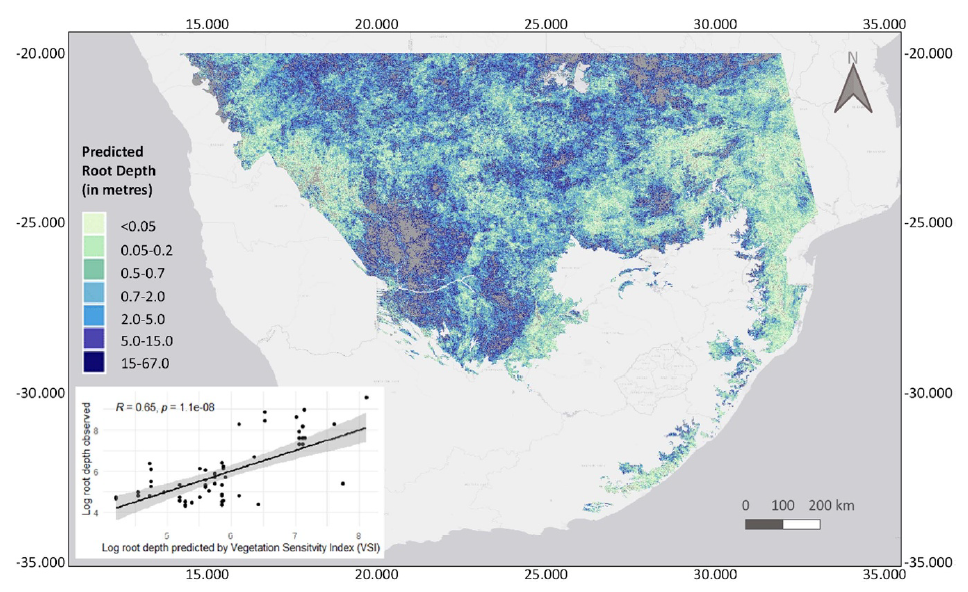Climate change: learning from the past to safeguard the future
October 1, 2014
Under the umbrella of the Oxford Long-Term Ecology & Resource Stewardship Lab Dr Marc Macias Fauria has worked on the Ecochange project within the Horizon 2020 research framework. The project focused on how changes in climatic conditions affect ecosystems and how we can protect biodiversity from these.
The following news article has been published on the work.
Climate change: learning from the past to safeguard the future
How much can we really predict about the impact of climate change on groups of animals, plants, and natural habitats? The EU-funded Ecochange project turned to fossil records to investigate how species respond to even minor changes. Scientists can use this research to design ways to protect biodiversity from climate change.
Understanding the scale of the threat from climate change is crucial to being able to create conditions for the broadest possible range of biodiversity to survive. Over the last decade or so, scientists have developed general models to predict the impact on plants, animals and habitats. But the findings have been difficult to validate, and their lack of precision means that the risks and rates of change may have been exaggerated.
The Ecochange project, funded by the European Union under a Marie Curie Fellowship and coordinated by Oxford University, UK, started out with two objectives: to investigate whether palaeoecological data from ancient fossil remains can increase our knowledge of current climate change impacts, and to study specific environments and how they can protect species from hostile climate conditions.
Ecochange used so-called ‘Species Distribution Models’ (SDMs), which link information about the occurrence of species with general environmental data. But to make the models more sensitive to small-scale variations, the researchers added a high-resolution study of the physical characteristics of landscapes.
For example, geologic and geomorphic conditions were found to be just as important as temperatures in regulating the growth of mountain forests, which could be crucial refuges for small wildlife populations. The project set out to identify all the variable factors influencing the impact of past, current and future climate change.
Lessons from the past
To validate the models, and understand the relationship between animals and their environment, the scientists looked to the past. The ‘Quaternary’ fossil record covers the last two million years. Traces of shells, teeth, pollen and seeds reconstruct vanished ecosystems and give clues to how animals and plants lived and died.
“Including species-occurrence data in periods other than the present allows researchers to expand their understanding of the responses that species have had in periods of past climatic changes,” explains Marc Macias Fauria, Ecochange’s Marie Curie Fellow.
This approach was applied to a number of ‘taxa’ (populations of organisms that together form a unit) in woody areas, helping to predict how they might react to future climate and environmental change.
“This study demonstrated that, when carefully selected, palaeoecological data can be used in conjunction with SDMs in order to track and better understand species’ responses to changes in climate even in relatively short time periods,” notes Macias Fauria.
The project has generated a number of spin-offs. The scientists have launched new collaborative studies with Canada, Finland, Russia, Sweden, Norway and UK, creating an expanded, EU-based research network.
“We are examining new questions that deepen the topic and promise high-impact science in the coming years,” says Macias Fauria. This includes research into the effect of reindeer grazing on tundra vegetation, and how this vegetation reacts to temperature change.
Palaeoecological records are emerging as an important resource for conservation and land management policies, as well as the development of strategies for conservation and mitigating climate change. The ideas from the project now form part of an M.Sc. course on SDMs at Oxford University, which is highly appreciated by students.
“I have a PhD student, Henrik Hannemann, with a background in ecology and economics who is using this approach to directly tackle conservation strategies in Europe,” says Macias Fauria.
The original article was published on the Horizon 2020 news website
Latest News
Vector Atlas Engagement and Partnership Meeting, December 2022

The Vector Atlas team is looking forward to welcoming representatives from over 15 African countries to the first Engagement and Partnership Meeting to be held at the International Centre ... Continue reading
Seeing roots from space

A new study led by Dr Nicola Kühn during her DPhil associated with the lab titled “Seeing roots from space: aboveground fingerprints of root depth in vegetation sensitivity to ... Continue reading
Vector Atlas Spatial Modelling Workshop, November-December 2022
We are excited to be holding the Vector Atlas Species Distribution Modelling Training Course at the International Centre of Insect Physiology and Ecology (icipe) in Nairobi, Kenya, 30 November ... Continue reading
Vector Atlas at the 8th Annual PAMCA conference

The Vector Atlas team had a great time at the 8th Annual Pan-African Mosquito Control Association (PAMCA) conference held in Kigali, Rwanda, from 26 to 28 September 2022. Excellent ... Continue reading
Vector Atlas Kick-off Meeting

The international Vector Atlas team gathered at the International Centre of Insect Physiology and Ecology (icipe) Duduville campus in Nairobi from 4 to 8 July 2022 to celebrate the launch ... Continue reading
